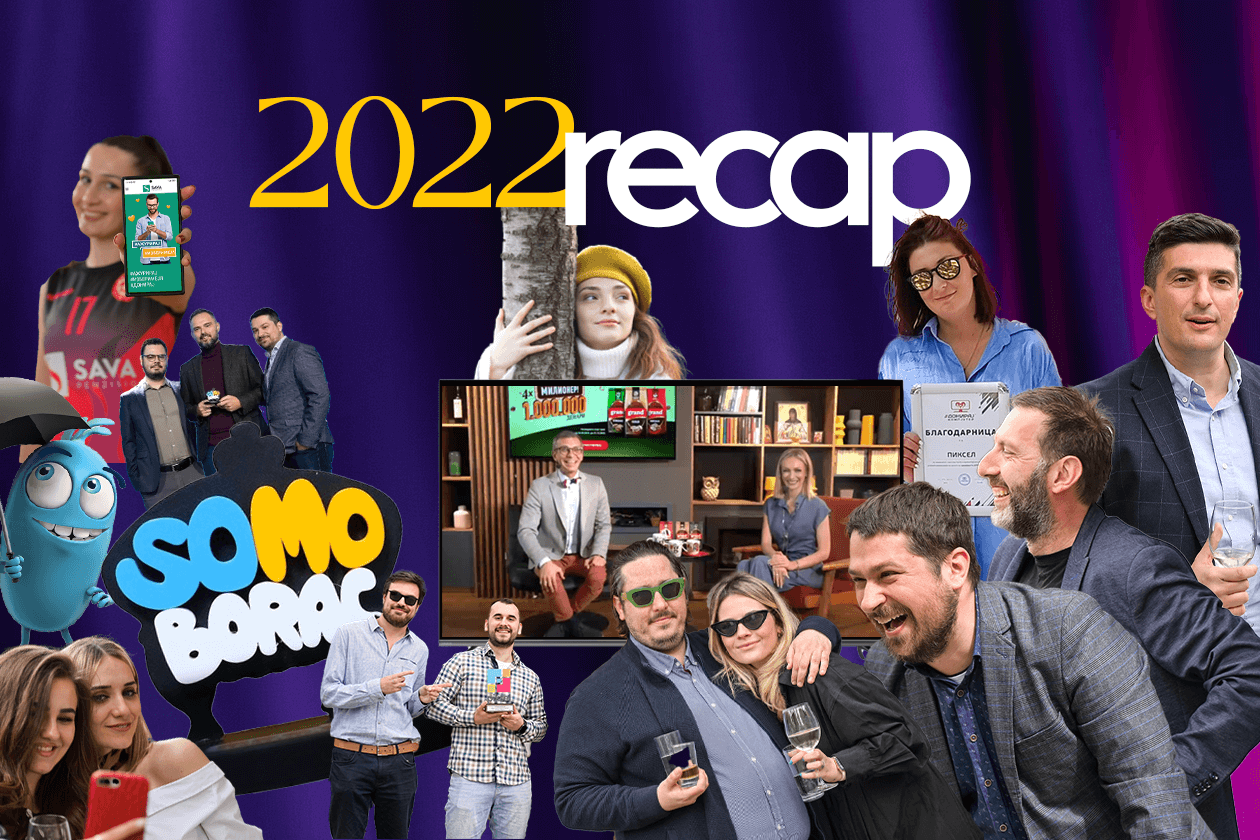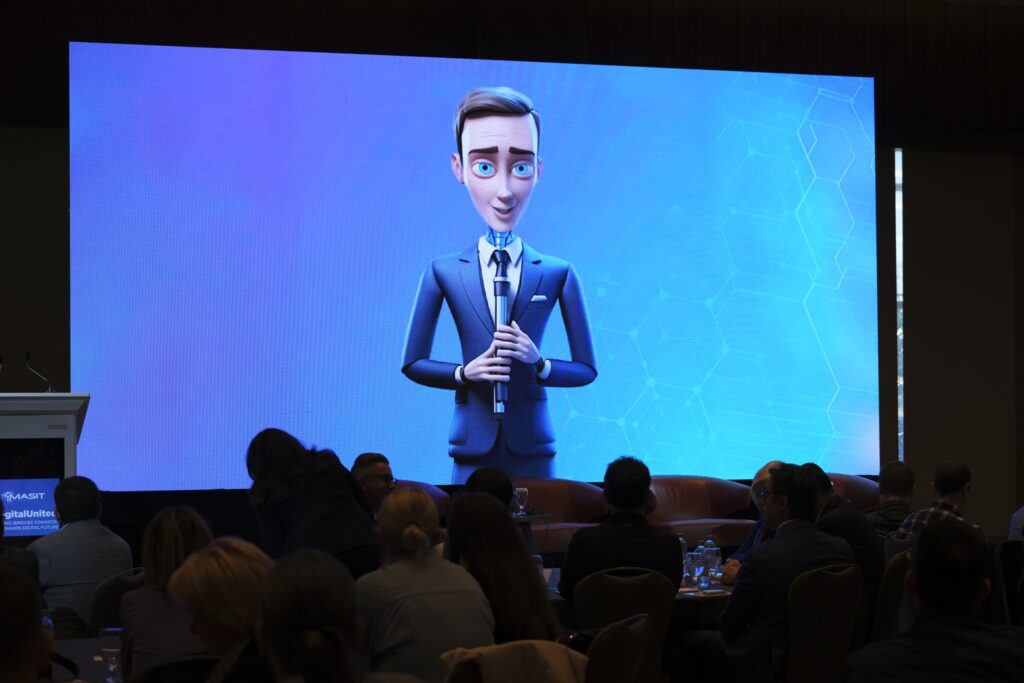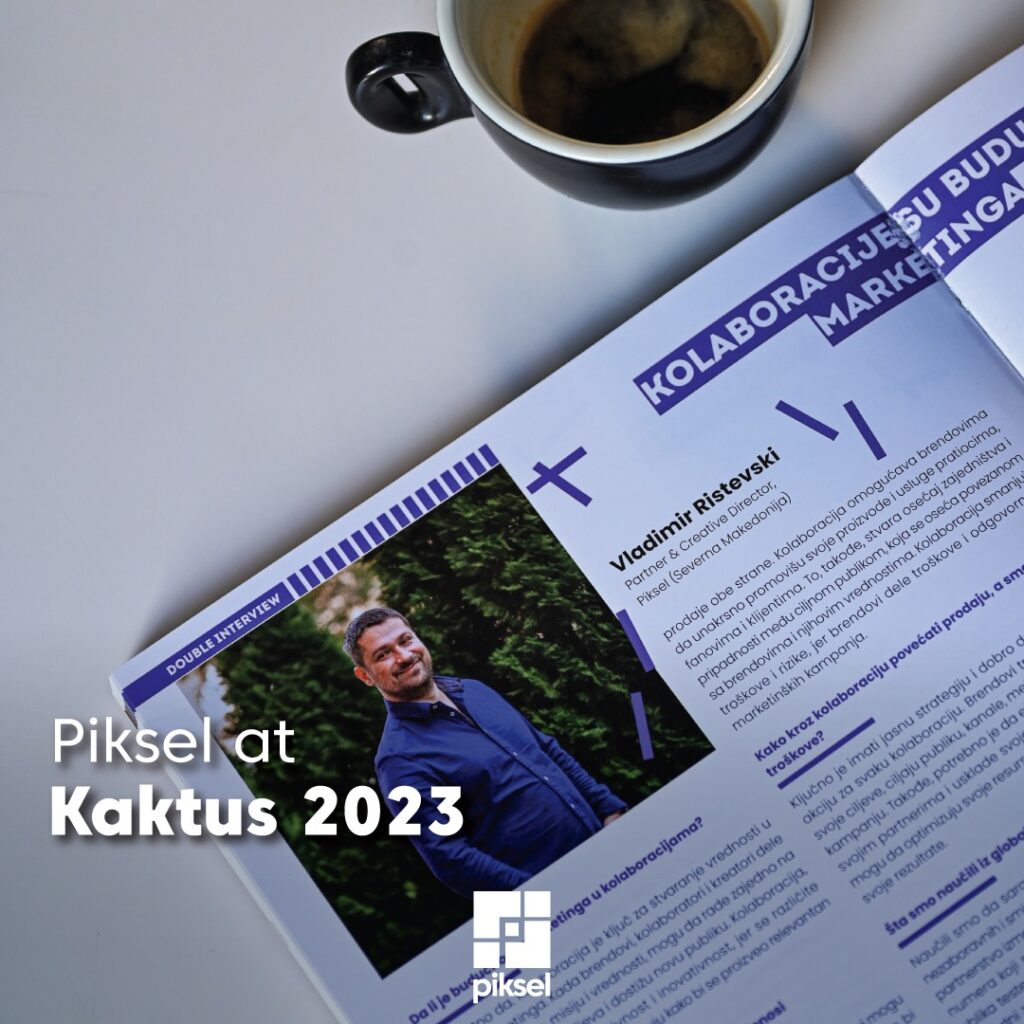Yes, it’s a sunny day in November 2023 and we are writing our “report” for what happened in Piksel in 2022. This fact should prepare you that we have many events (and campaigns) to cover, and honestly, we were very tempted to jump to the jubilee 2023 year.
But here we are, successfully fighting the urge to take the easier road. We hope you’ll enjoy taking a walk with us through the 2022 memory lane.
New Piksel people in 2022
As Dilated Peoples say, “Our peoples come first.” 🙂 These are the great colleagues who came to stay and make our lives easier.
Ida Delinikolova became our first and lovely HR manager aka Kadrovo.

Aleksandar Jakimovski, or simply Alex, joined us as our Head of Design.

The department also got a creative refreshment with Marija Dojcinovska, Natalia Aceska, and Dejana Petrusevska.

The empowerment of the Account and Digital management team came with Jovana Peneva and Zivkica Boneva. The copywriter’s team became stronger with Tea Jovanovska.

The Devs department started shining even brighter with Angela Shutinovska, Ivana Savic-Georgieva, Aleksandar Nusheski, Sebastijan Zindl, Aleksandar Temelkov, Marjan Taskov, and Damjan Stamenov.

Just WOW! 🙂
What we achieved with a stronger team
Well… a lot! Much more than we can cover in one article. However, we’ll try to paint you a picture.
The year started with joining forces with the Becutan Kids Vits club. Here’s the result:

In the spirit of empowering young people, we were delighted to take part in the Coke Summership 2022 promo campaign. The goal was to improve the reach and awareness of Coke Summership, attract more student participants, and develop a long-term strategy to create a culture among young people to strive for personal and professional growth. Read all about this project here. You can also check out the web destination for Coke Summership made by our Devs team.

Here you can watch the video with testimonials from the participants:
On the subjects of video production and Pivara Skopje, we were happy to work on the Break the Bias campaign. Make sure to watch all 3 videos on YouTube.
Smiles, positive energy, music, and Insta Grand are what lead us to complete enjoyment every day. Especially when we take part in creating awesome social materials that will spread positive vibes through social media. Is there a better feeling than when you do something that others can enjoy?

In 2022 we also went to the IQOS Originals DUO launch two-day event where we enjoyed… well, everything! The music, the food, and the four types of cocktails celebrating the four new IQOS Originals DUO devices. The cool photos were inevitable.

As we are always part of cool events, it was only logical to organize the 18th Vivax COOL Day together with our dear Vivax Macedonia team. More than 200 Vivax partners, colleagues, and friends enjoyed the latest news from the industry and of course, the unforgettable party and the stand-up show!
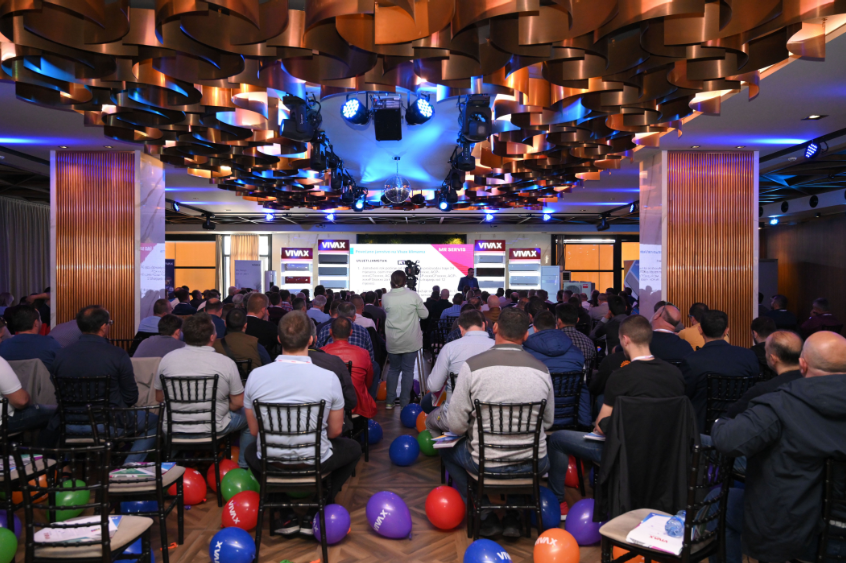
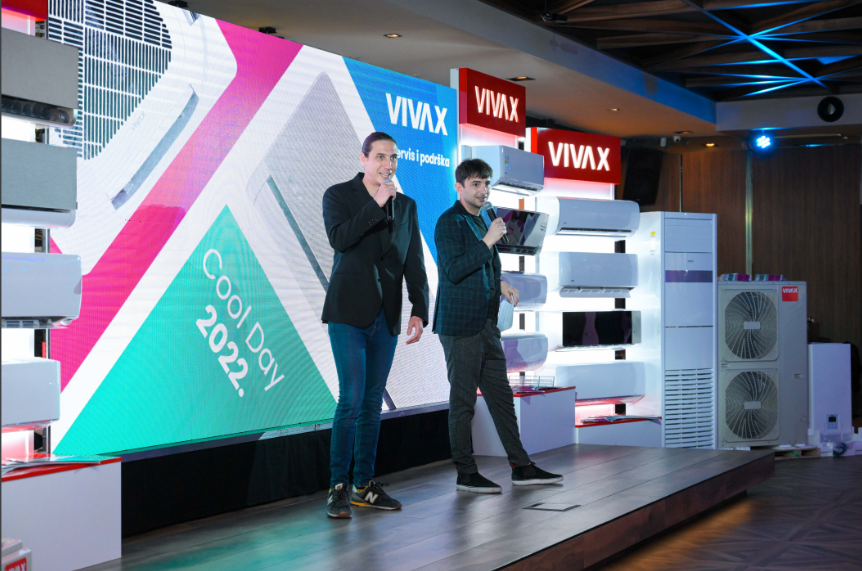
Piksel & Vivax is a perfect recipe for good times. Ask anyone of the hundreds of hikers who joined our Vivax “I jas sum na Vodno” events. This epic adventure turned into an outdoor event series.
Picture this: Vodno mountain, vibrant tunes, and refreshing juices, setting the scene for unforgettable moments. This is how we build a thriving, close-knit community.
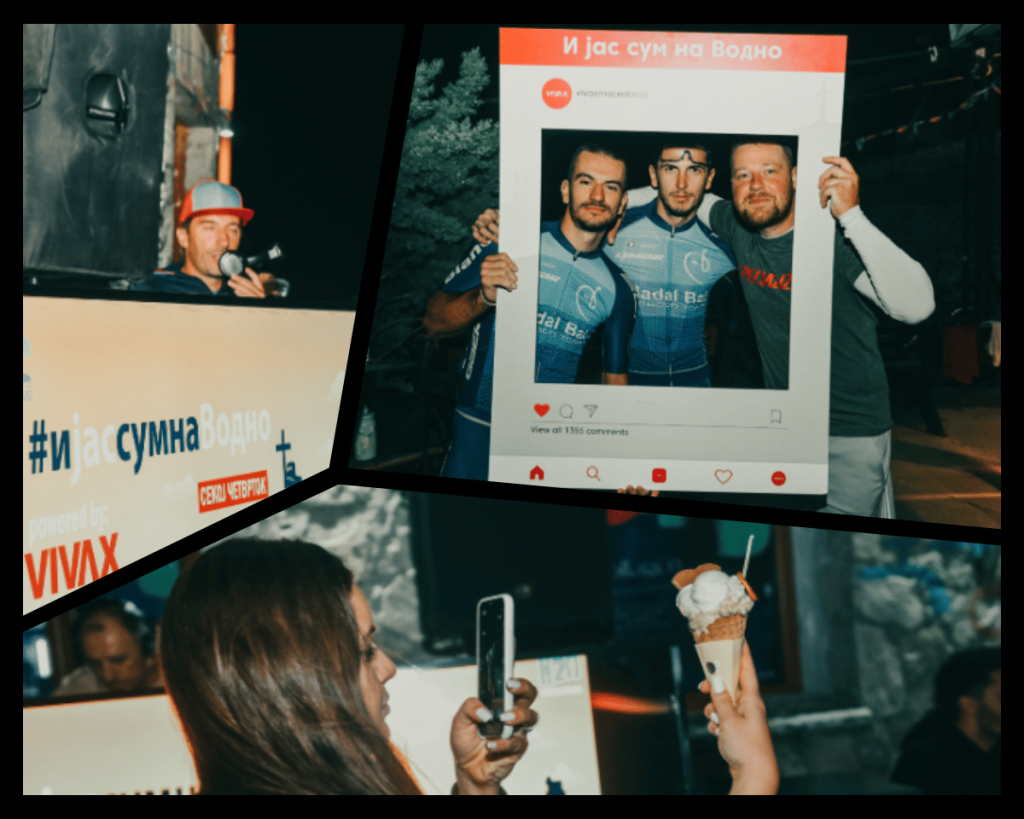
Another big win was the second edition of Zasadi Zelba (Plant a Wish) campaign for the three pension companies Sava Pension Company A.D. Skopje, Triglav Pension Company A.D. Skopje, and KB First Pension Company A.D. Skopje, supported by MAPAS.
The end of the campaign was marked by planting trees in the courtyard of the Faculty of Architecture in Skopje and awards for the students with the best solution for the design of the largest ever “Pension Park”. In this edition of the campaign, 75 seedlings were planted in 4 secondary schools with more than 200 students and our dedicated partners!

“Azuriraj, doniraj” was another socially responsible campaign that we crafted, this time for Sava Pension Company. A simple and paper-saving activity of their members – updating their personal data and choosing to receive their annual reports electronically, helped Sava Pension Society to establish a fund for donating equipment to the University Clinic for Children’s Diseases – Skopje.

This year brought us the start of a beautiful story with a new client – Replek. We joined forces to build well-being for everyone. The result was: two super successful product campaigns, which were actually the first ones after the rebranding of Replek.

After the Neuro-vit and Oralsept successes, we ended the year with a nice emotional video with Replek employees who shared their warm wishes.
The Devs department also worked hard, and came up with cool solutions for several clients, among which we would point out the websites for RK Alkaloid, TZG Europe, and this year’s cutest – Peazy!
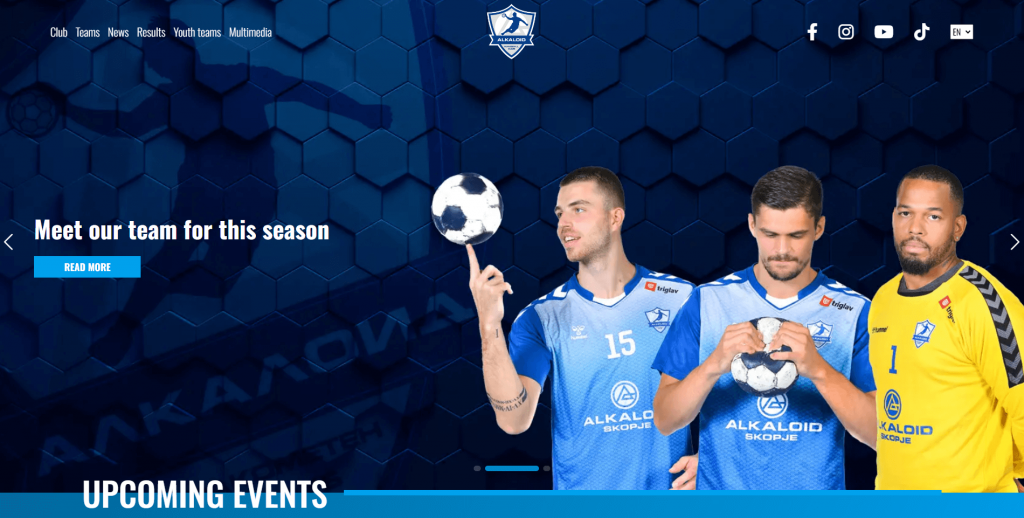
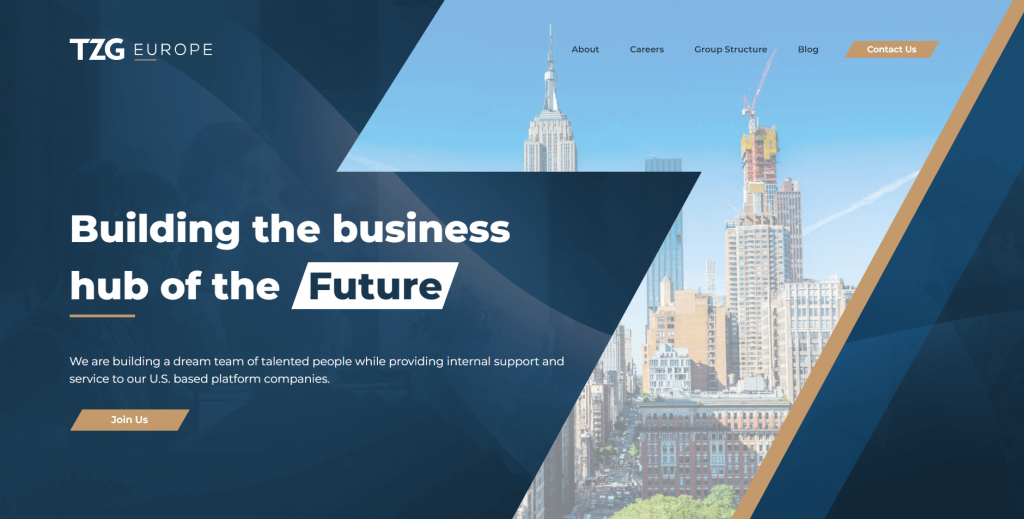

These are only a few of the bigger projects that marked 2022 for us and our clients. We absolutely love everything that we work on, and we share it on social media. So, make sure to give us a follow and try to keep track. 🙂
We shared and received knowledge (as usual)
Thanks to Galeksia, our dear Mila appeared as a guest lecturer for the students from the Professional Diploma in Digital Marketing Program on the topic “Website vs Facebook and Instagram Shops”.
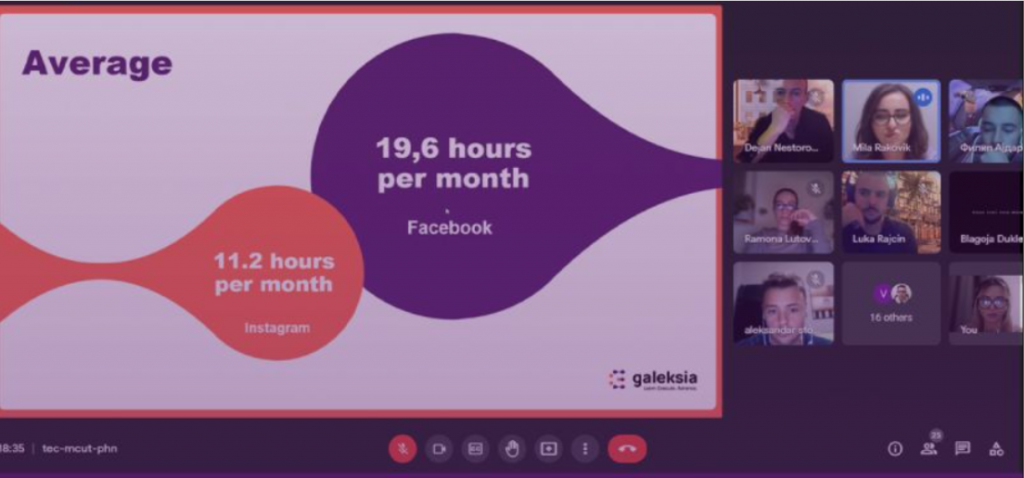
To our great pleasure, we were invited to visit Polyesterday, our long-time collaborators. We had the opportunity to see what they actually do after they receive our inquiries (always urgent, of course).
We also enjoyed the Time Management training by the wonderful Zorica Serafimovska Arsovska who helped us continue our professional growth.
Then, we had the pleasure of conducting training about the use of LinkedIn for the amazing team of Würth Macedonia.
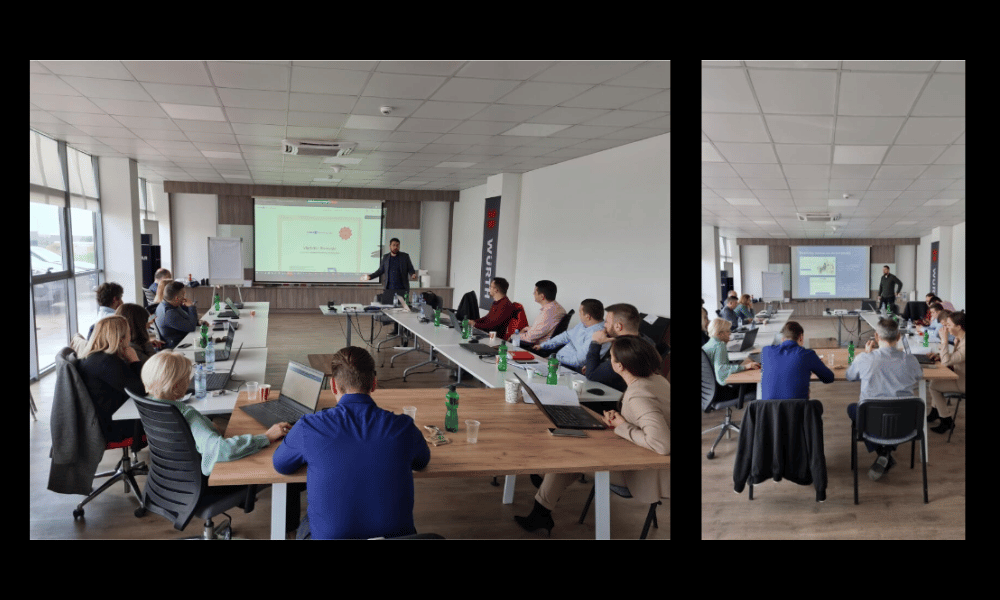
Piksel girls attended the 5th edition of the biggest e-commerce conference @ecommercemacedonia and they had a great time.
We were also conferencing, team building, and bonding at the special Mavrovo edition of AllWeb.mk.

In the endeavor to increase the organizational capacity and improve the overall competitiveness of the company, we took part in the Bitove Family Entrepreneurship Program. Check out what our Filip Ristevski has to say about it: Our experience with the Bitove Family Entrepreneurship program.
And the last, but very exciting event in this chapter. Our Creative Director Vladimir Ristevski took part in the jury team of the regional Kaktus Festival in Belgrade. The 2022 edition of the festival celebrated the local power of creativity through the slogan “Self-reflection”. Here you can read his short interview for the Serbian Marketing mreza portal – “Our industry is still afraid to experiment.”
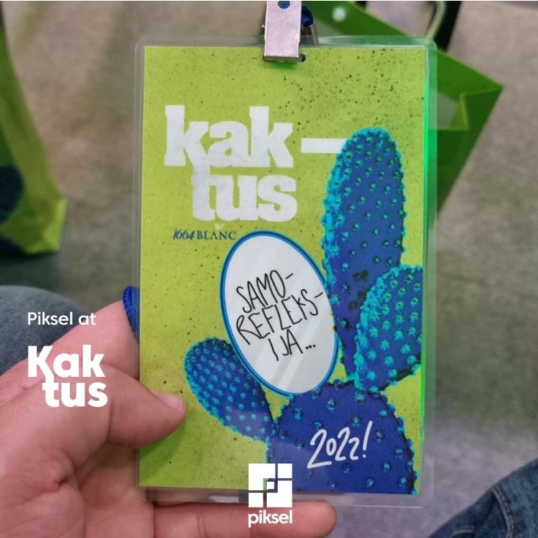
We also received great recognitions
Speaking of Vladimir Ristevski, 2022 was a big year for him, and it brought lots of happiness for us. 😊
He was selected as one of the 40 most successful and ambitious young business leaders in South-Eastern Europe! Here you can read more about his prestigious Business Elite Award.
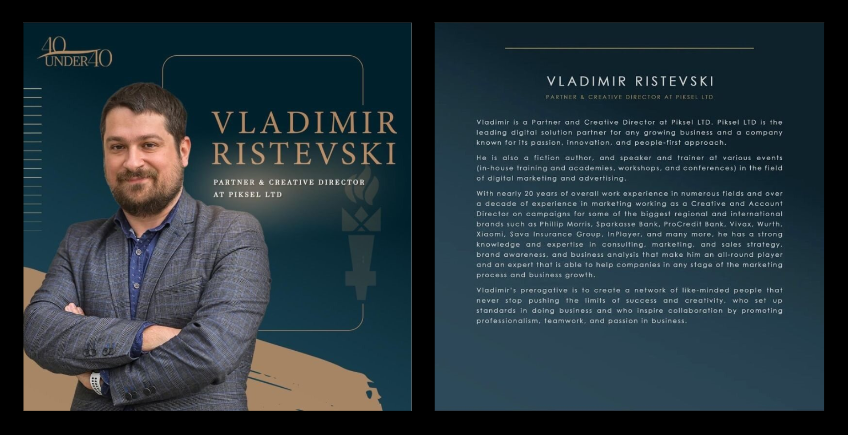
While working on the ending of the second edition of Plant a Wish campaign we received our first SoMo Borac award for Best Storytelling! This was our first entrance to these regional awards, and we are beyond proud that we came back with this recognition for this campaign that is very close to our hearts. (And this story doesn’t end here, as you will read in our next Year in Review report)
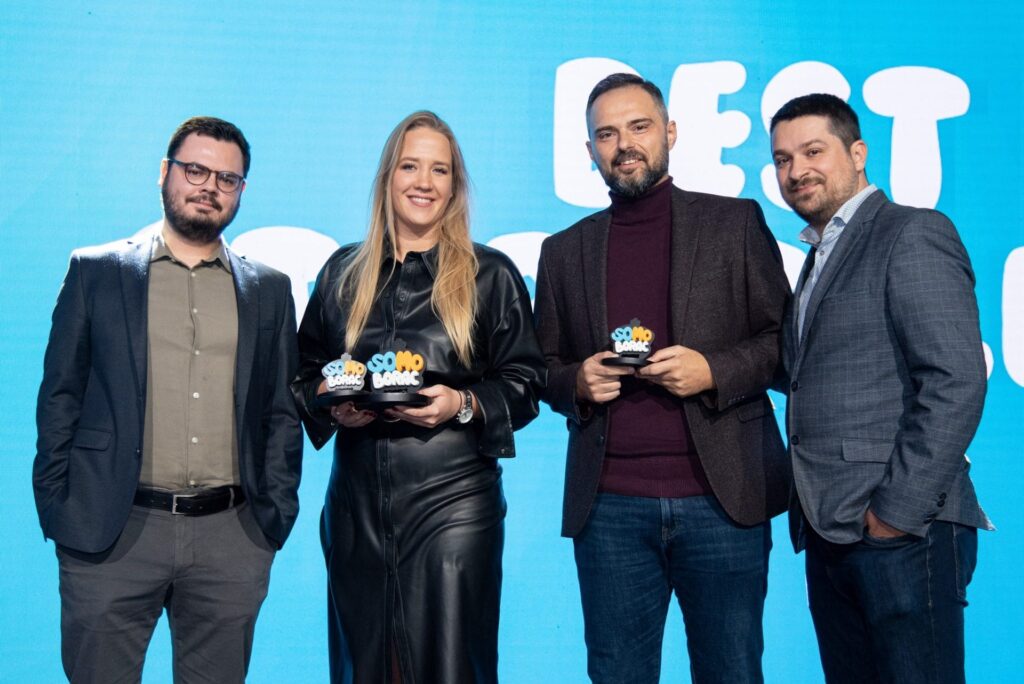
Celebrations of Piksel in 2022
We just love celebrating things, days, and life as it is! So, aside from our client’s wins, proper holidays, and many, many birthdays, we have celebrated World Cocktail Day with signature cocktails named Jason, International HR Day (thank you, Ida, for bringing one more cause for celebration), Burger Day, and Chocolate Day which had a healthy string thanks to Healthyish Skopje.
We also appreciated Seno’s 5th anniversary in Piksel, World Coffee Day, and International Gin&Tonic Day with the unbelievably tasty, first Macedonian gin – Smidgin.
Who could resist the big palindromic day on February 22nd? We couldn’t.
We always encourage and motivate each other to keep going and RUNNING, but the circumstances asked for a celebration after crossing the finish line at @skopjemarathon.

With the coming of the fourth Stranger Things season, we got pretty hyped and started looking for a song that could save us from the curse of Vecna (which we usually call CORRECTIONS). These were the suggestions:
- Vlade: Dr.Dre – The Watcher
- Seno: Foo Fighters – Times Like These
- Marina: Depeche Mode – It’s No Good
- Nina: Joe Esposito – Lady, Lady, Lady
- Efinski: Kate Bush – James & The Cold Gun
- Tea: Street Dance – Break Machine
- Marija: Taylor Swift – Trouble
They don’t work.
Being aware that we cannot always control our stress levels and challenges during the day, we realized the dire need for an easy and effective anti-stress mechanism. We presented it to our social media followers on World Mental Health Day. But it works every day. You should try it.
Find a quiet spot, take a comfortable position, and try to free your mind from any thought. Now, follow the circle and breathe to its rhythm.
Piksel culture additions in 2022
Looking for a new motivation and effectiveness solution, we came up with a new rule: the last Friday of the month shall be a Happy Friday! The work ends at 2 PM, and we spend the rest of the day having fun, drinks, laughs, or afternoon snoozes that will help us go through a fun-filled weekend.
We also started a Book Exchange Club on Book Lovers Day, which sparked the #Pikseloteka tradition of monthly suggestions for good books. (You can check them out using #Пикселотека hashtag on social media)
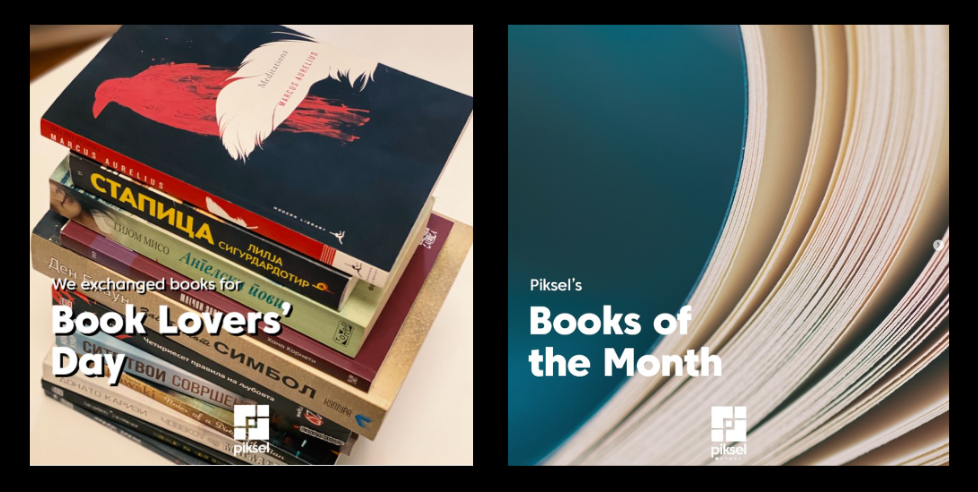
While humanitarianism is not new for us, in 2022, we had our first cooperation with the Doniraj Kompjuter (Donate a computer) initiative. It was our great honor to be one of the companies supporting this great cause. We were happy to receive this Thank You note to remind us of the warm feelings when doing a good deed. We hope we’ll continue this beautiful tradition together.
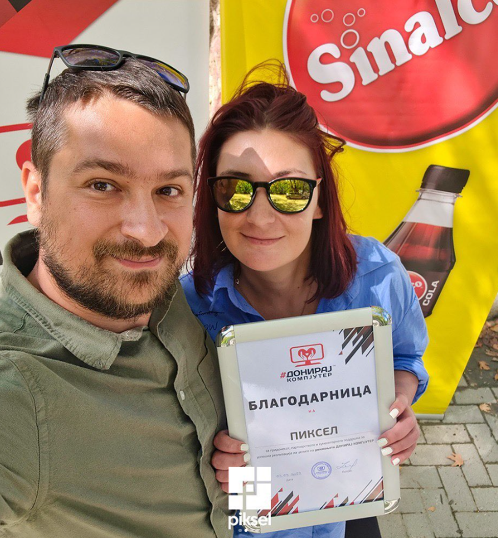
With all the hype around AI, we decided to start experimenting with it and it stuck with us. We asked Midjourney AI to create promotional art for Piksel. Here are the results. Disclaimer: No graphic designers were fired during this process.

Did you think we forgot the Piksel birthday?
Ah, dear friend, you should pay more attention to our vibe. Of course, we had a party for the 9th year of our existence! We danced, sang, played games, tasted the Kimov Winery wines, and took over the DJ booth for a hybrid karaoke. 🙂
Read more about the event and the statements of our management team: We celebrated the ninth Piksel birthday!
And now, we are ready for the wrap!
As you will surely agree, 2022 was amazing! 2023 is going even better (intentionally teasing you again to wait for the new Year in Review article).
If you follow us on social media, you have the gist. And in that case, just know that you make everything better and sweeter, and we are greatly thankful for your support.
In case you are a new Piksel fan, brace yourself for a joyful ride ahead. 🙂
